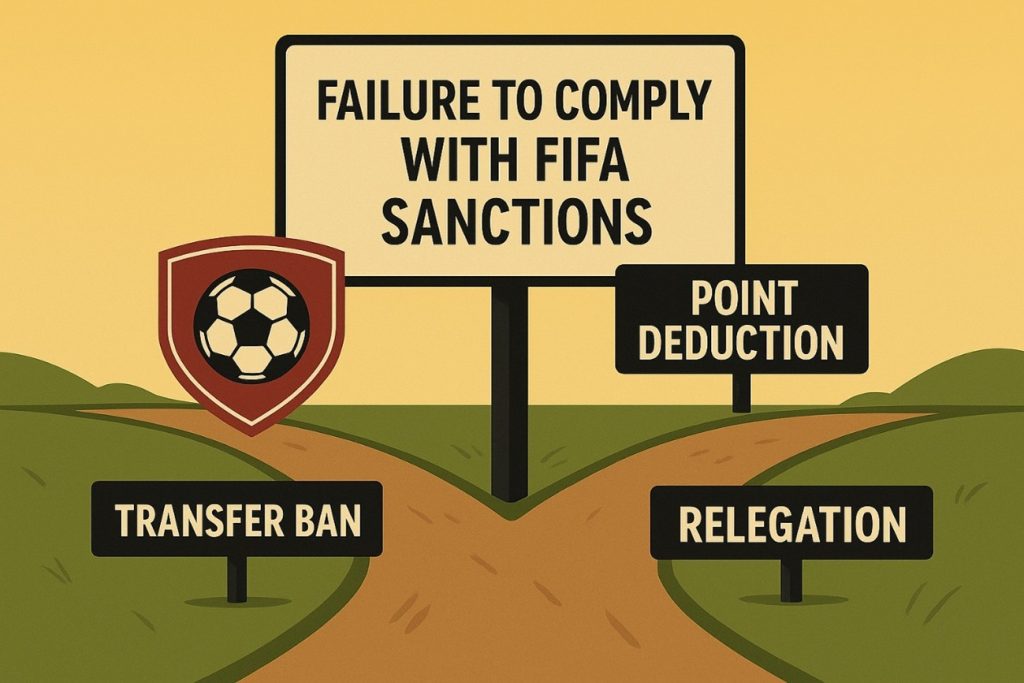Following the Preliminary Ruling of the Court of Justice of the European Union (CJEU) in Case C 650/22, FIFA v BZ (‘the Diarra case’), significant questions have arisen regarding FIFA’s ability to self-regulate effectively in alignment with international laws. Recently implemented interim regulations, introduced in 2025, aim to address these concerns, reshaping expectations for the winter transfer window and the future of the football transfer market.
Understanding How a Transfer Works
In the traditional football transfer market, the ‘buying’ club compensates the ‘selling’ club for terminating a player´s existing contract . This compensation is agreed between the parties involved. However, to complete such transaction, the first step is to have a contract. Without a contract, no transfer can occur. Thus, Article 17(1) of FIFA’s Regulations on the Status and Transfer of Players (RSTP), regulates the compensation a player must pay to his club if terminates his contract without just cause. Intriguingly, under Article 17(2), the buying club is also jointly and severally liable, meaning both the player and the new club are responsible for damages.Relevance of the Diarra Case
Unilateral contract terminations by players are rare and discouraged by severe sporting sanctions and financial penalties under Article 17. These penalties are steep to deter players from breaching contracts without just cause, a policy designed to maintain contract integrity and stability within the sport.
- The Issue at Hand
The principle of joint and several liability, combined with sporting and financial sanctions, raises significant legal questions. A particularly contentious issue is whether an association can issue an International Transfer Certificate to a new club if there’s an ongoing dispute between the player and their former club.
- Implications of the CJEU Ruling
The CJEU’s ruling suggests that FIFA’s current regulations on compensation obligations and sporting sanctions in cases of unilateral terminations without just cause may violate the freedom of movement of workers and EU Competition Law. The burden is on FIFA to align its provisions with EU international law, changes that are crucial within the EU and could potentially influence other regions globally.
Detailed Analysis of FIFA’s Interim Regulations 2025
FIFA has published their Interim RSTP Regulations ahead of the winter transfer window, adopting changes after consulting with stakeholders to address the criticisms highlighted in the Diarra case:
- Clarity on Compensation Calculation: The method for calculating compensation has been refined to adhere to the “positive interest” principle. According to CAS jurisprudence, this aims to determine an amount which shall basically put the injured party in the position that the same party would have had if the contract was performed properly, ensuring the calculation is not only just and fair but also transparent and comprehensible.[1]
- Burden of Proof Adjustment: There has been a shift in the burden of proof concerning joint and several liabilities and the inducement to breach a contract. Clear evidence is now required that the new club actively induced the player to breach their contract.
- Just Cause Definition: The notion of ‘just cause’ for terminating a contract includes a general definition to provide clarity, stating that just cause exists “in any circumstance in which a party can no longer reasonably and in good faith be expected to continue a contractual relationship.” This addition aims to codify existing jurisprudence, making the rules more accessible and understandable to all stakeholders.
- Disciplinary Measures and Evidentiary Duties: Disciplinary measures have been specified, along with the procedures for evidentiary requests. Parties must now collaborate in establishing facts and respond in good faith, with an adverse inference potentially drawn from non-compliance. This ensures a more comprehensive and fair decision-making process in FIFA Tribunals.
- International Transfer Certificates (ITC): Significant changes to the ITC issuance process ensure smoother transitions for players between clubs. It is no longer possible for a former association to reject an ITC Request outright. If the former association does not respond within 72 hours, the new association can proceed with registering the player.
Potential Changes and Their Implications
This reshaping of the transfer system could lead to increased instances of ‘poaching’ by wealthier clubs, although this perspective might be overly pessimistic. Imagine a transfer market where players can unilaterally terminate their contracts and negotiate directly with new clubs, where huge sign-on bonuses could become the norm to offset financial compensation without the fear of sporting sanctions. Such changes would make loyalty payments and wage increase clauses critical in player retention strategies.
Broader Impact and Global Perspective
While the ruling primarily addresses concerns within the EU, its impact on smaller clubs and leagues outside the EU could be profound. These entities might face challenges in competing financially and retaining talent if similar regulations are not adopted globally. Stakeholders from non-EU regions need to prepare for possible shifts in FIFA’s regulatory framework that could affect their operational dynamics.
Conclusion
The adaptation of the interim regulations clarifies, objectifies, and addresses the main challenges raised in the Diarra case. The impact, yet to be fully seen, is likely to lead to a complete shift in the dynamics between players and clubs, strengthening the position of players and potentially increasing unilateral terminations and ‘poaching’. The power and freedom for the players have been strengthened, but the stability of the transfer market, long effective at facilitating international transfers, will likely undergo unprecedented changes, impacting the international landscape as well as affecting clubs at a national level who will have less strength to hold onto a hidden gem.
The next step for FIFA is now to establish a permanent framework that aligns with the ECJ’s criticisms and is supported by all stakeholders involved in discussion by July 2025.
[1] CAS 2008/A/1519 & 1520, para 86 & 89












